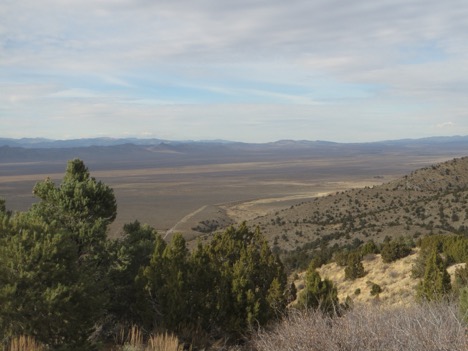
by Patrick McShea
From Elko, Nevada, the Carnegie Museum of Natural History frog fossil expedition shifted some 125 miles southeast to steep winding canyons within the South Egan Wilderness, a mountainous tract of more than 67,000 acres.
The move involved a change in the age of the rock outcrops we searched. Near Elko our efforts were confined to various associated rock layers, which geologists categorize as the Elko Formation, a thick and wide spread unit which formed some 46 – 39 million years ago during the Eocene Epoch. In the South Egan Wilderness, we explored the Sheep Pass Formation, a sequence of far older rocks which formed during the Late Cretaceous through middle Eocene Epochs some 70-46 million years ago.
Daily procedures were far different in the BLM-managed wilderness than on the outskirts of Nevada’s 15th largest city.
Instead of commuting to outcrops from a motel in Elko’s center, we hiked to rock exposures more than a mile from our simple camp site, proceeding up dry stream beds and ascending eight staircase-like water falls to reach the fossil-bearing units at elevations exceeding 6,700 feet. Evenings were cold, star-filled, and absolutely quiet but for the occasional howls and yips of coyotes.
Because a 2012 wildfire burned over 10,000 acres of sage brush, juniper, and pinyon pine, our camp area was a surreal landscape of charred trees.
Patrick McShea is a museum educator who is traveling through Nevada with Vertebrate Paleontology Collections Manager Amy Henrici to search for frog fossils. He frequently blogs about his experiences.
